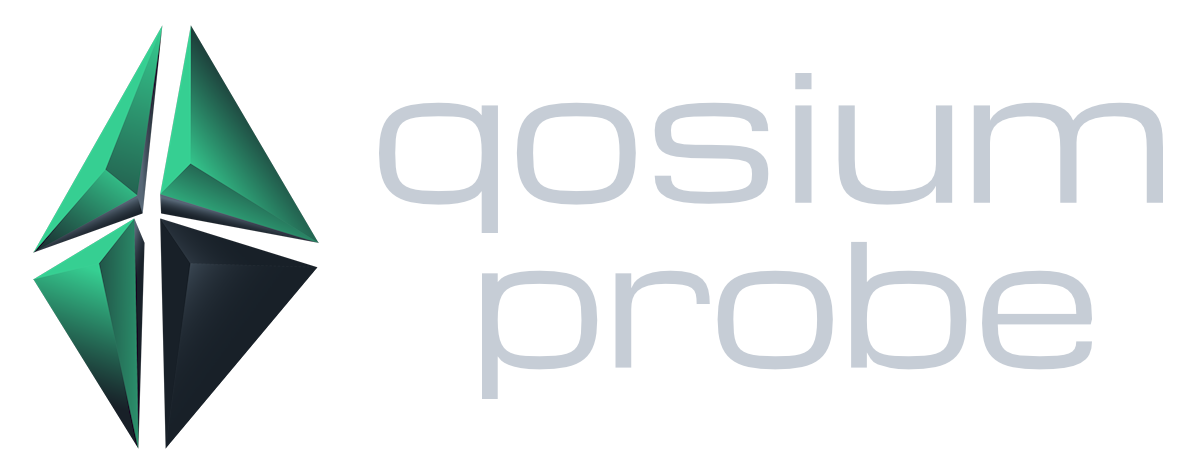Qosium Probe
Qosium Probe is the heart of the Qosium family. It is the software that carries out the actual measurement as instructed by measurement controllers like Qosium Scope, Qosium Scopemon, or even your own developed upon the QMCP API provided by Kaitotek. Without control, Qosium Probe does nothing, and does not consume any processing resources either.

1. General Information #
Qosium Probe provides high measurement performance. Despite this, it’s light-weight, and does not limit the device type where it can be installed to. This is one of the main advantages of using Qosium. Unlike with most other high-performance measurement solutions, truly end-to-end measurement all the way to mobile devices is possible with Qosium. Lightness enables using Qosium also in resource constrained environments, such as in IoT networks.
Qosium Probe operates the packet capturing process and performs almost all the measurement related calculations. It does not have a user interface, but instead, a measurement controller is required to operate the measurement. The typical deployment is to install Qosium Probe as a system service to the background in a measurement point. The platform, where it is installed, is called a measurement point.
Qosium Probe is a multi-thread server capable of supporting a number of simultaneous controllers. All controller sessions and their measurements are independent. Thus, only a single Probe is required per measurement point.
2. Tech Sheet #
- Purpose: The core of Qosium, enabling the passive QoS measurements (measurement agent)
- Current main version: 1.7… (Core: 2.30…)
- Delivery type: Binary executable and binary shared libraries
- Tested platforms (Qosium Probe’s availability is not limited to those)
- Windows 7 and newer, including multiple Windows Server versions
- Linux operating systems with kernel version of 2.6 and newer
- OpenWRT/LEDE
- FreeBSD v9 and newer
- Android: various versions
- macOS: 10.12 and newer
- Raspbian Buster
- Axis network cameras: various versions
- Teltonika routers: various versions
- NanoPi router: R1S
- Labpano Pilot Era: All-in-One 8K 360 VR Camera
- Other supported platforms
- As long as build environment with GNU C++ version of 4.8 and newer is available, Qosium Probe can typically be provided.
- Installation and Running Requirements
- Superuser rights to install and run
- Packet capture library
3. Overhead & Performance #
Qosium Probe is a light-weight software. When it’s running in an idle state, not instructed to measure, the resources it takes from the host machine are negligible. When measuring, the CPU and memory usage depend almost directly on the packet rate of the measurement target flows. You can measure fairly high throughputs even on a constrained device, like an older Raspberry Pi. On a modern standard office computer, measuring a traffic stream of 100 000 pkts/s should not be a problem. At this speed, the machine’s 1 Gbit/s LAN link is already filled with traffic.
When there are multiple simultaneous measurements ongoing, they will all their part to a total load of Qosium Probe. The maximum number of simultaneous controllers per Probe is dependent on capture parameterization and heaviness of the simultaneous measurements vs. the resources available in the platform.
4. Security Considerations #
By its nature, Qosium Probe is a remotely controlled measurement unit. The control of Qosium Probe can be limited to a certain IP address space or even only to certain IP addresses see the parameterization. However, this is ineffective if the misuse is committed inside the company’s network. Thus, it is the user’s responsibility to set the control limitations to Qosium Probes, and take care of the security of their network in such a way that no third party can break into the network and potentially misuse Probes installed to the devices in the network.
Further Reading
These instruction comprise Qosium Probe installation to different operating systems.
A Qosium measurement is parameterized by using a measurement controller, such as Qosium Scope. In most of the cases, you just install Qosium Probe as a system service once and start measuring without any modifications to the Probe itself. However, Qosium Probe has also operational parameters that in some measurement scenarios need attention. This article describes the available parameters and how to set them to the Probe.
Qosium Probe is not directly operated as such since Qosium measurements are controlled fully by a measurement controller. However, there are certain operative functionalities, like license activation and launching, that are discussed in this section.
Suggested Pages
Qosium Probe is a real-time and passive measurement agent. It is light-weight software, which means that the same software can be installed all the way from mobile devices to large-scale server clusters.

